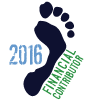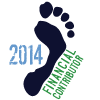Yah, I'm definitely not going to go back and read all that, but if I recall correctly, the problem is that Kirby/Payne et al confuse, just as the popular media does,
acute injuries incurred while
transitioning to barefoot/minimalist running, with
chronic injuries from
habitual use of overbuilt shoes and orthoses. And so they end up shrugging and saying, "you see, neither one is better or worse and there's no science to back any of it up."
The former kind of injury, of course, presupposes previous habitual shoe use that has led to the atrophy of the foot and lower leg muscles, tendons, and bones. It's like blaming strength training for an injury incurred by an obese, sedentary person who launches right into deadlifting their bodyweight. It's the previous lack of strength training, or barefoot activity, that is to blame. Kirby/Payne refuse to acknowledge this and so assume that feet are weak and in need of protection/support by nature. If there is greater subtlety to their argument, or if some of the contributors are more nuanced in their approach, I apologize, but that's how I remember the crux of their argument.
If they want proof that barefoot is healthier, all they have to do is look at habitually unshod populations, where foot maladies are much rarer. Again, it's the evolutionary perspective that is missing in their arguments. They assume the contemporary urban condition is normal/the default, rather than look at how a biology that has evolved under quite different selection pressures may become better adapted to the world we have built up over the last few centuries of industrial capitalism. Simply walking around barefoot more and strengthening the body through fitness activity is a pretty obvious solution to many of us. No orthoses or pills or supplements required. The only question is how best to deal with the period of transition necessary in the habitually shod or sedentary. That's where all the problems lie, it seems to me.
Unfortunately, the fitness industry shies away from simple, evolutionarily sound solutions a good deal of the time. Instead of getting back to basics/nature, we're told we need more products to make our bodies function more naturally. Or instead of simply lifting heavy stuff to make our bodies strong, limber, and loose, we're told we need machines and stability balls and myriad different workout strategies.
I'm not sure who these evangelistic barefooters are. Straw men perhaps? Everyone here at BRS seems pretty open-minded. It's simply reasonable to assume barefoot function as the default, given what we know about evolution. No evangelism or purism required.
As for responding stereotypically to your post, I guess the standard definition of ToFP is pain in the top of the foot above the metatarsals, and the standard treatment is massaging the shin and calf muscles (
http://gobarefooting.wordpress.com/2010/05/01/injury-top-of-the-foot-pain-treatment-and-recovery/). It's too vague, you're right, and doesn't apply to more complicated cases like yours.






























